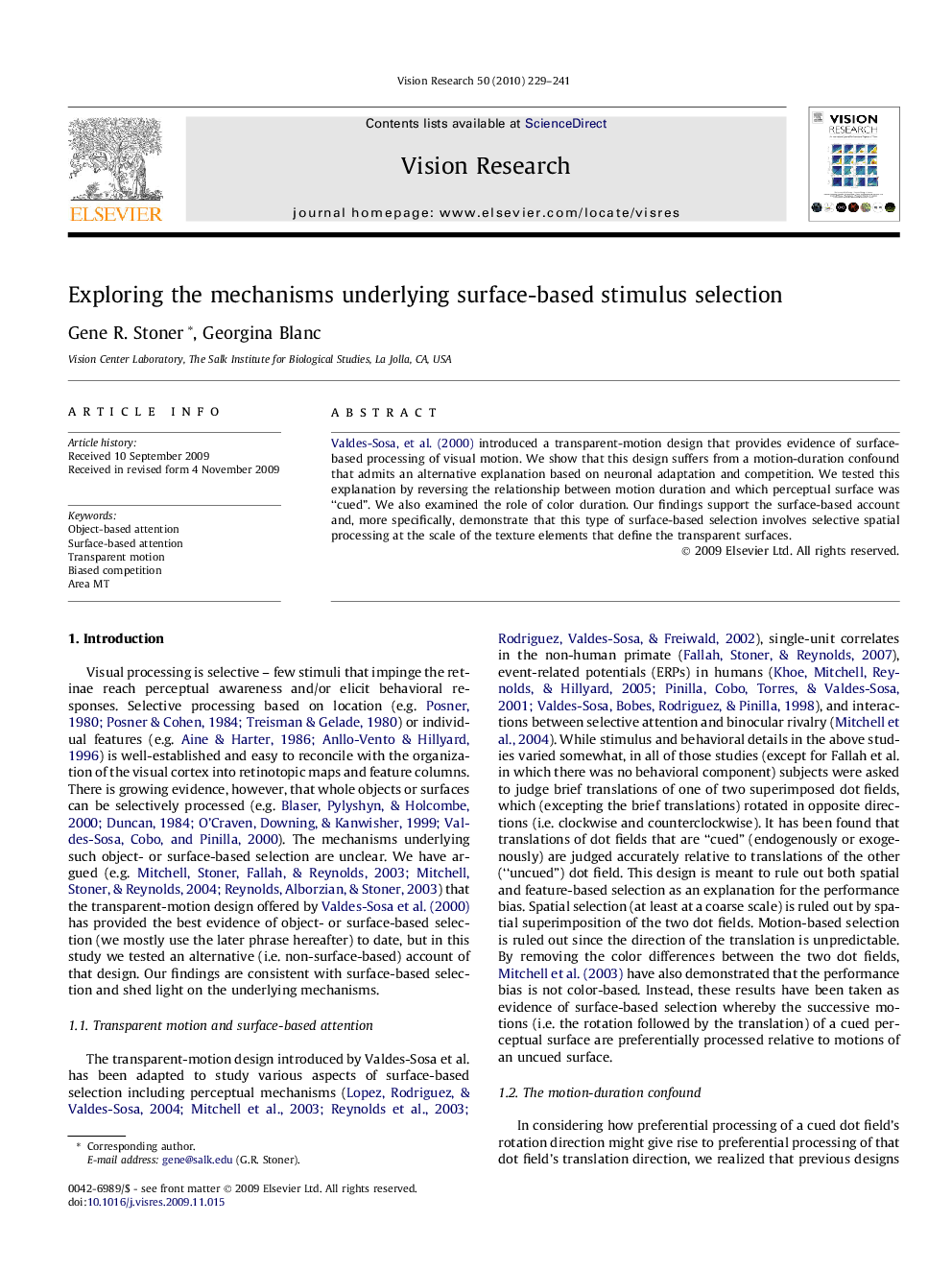| Article ID | Journal | Published Year | Pages | File Type |
|---|---|---|---|---|
| 4034529 | Vision Research | 2010 | 13 Pages |
Abstract
Valdes-Sosa, et al. (2000) introduced a transparent-motion design that provides evidence of surface-based processing of visual motion. We show that this design suffers from a motion-duration confound that admits an alternative explanation based on neuronal adaptation and competition. We tested this explanation by reversing the relationship between motion duration and which perceptual surface was “cued”. We also examined the role of color duration. Our findings support the surface-based account and, more specifically, demonstrate that this type of surface-based selection involves selective spatial processing at the scale of the texture elements that define the transparent surfaces.
Related Topics
Life Sciences
Neuroscience
Sensory Systems
Authors
Gene R. Stoner, Georgina Blanc,
